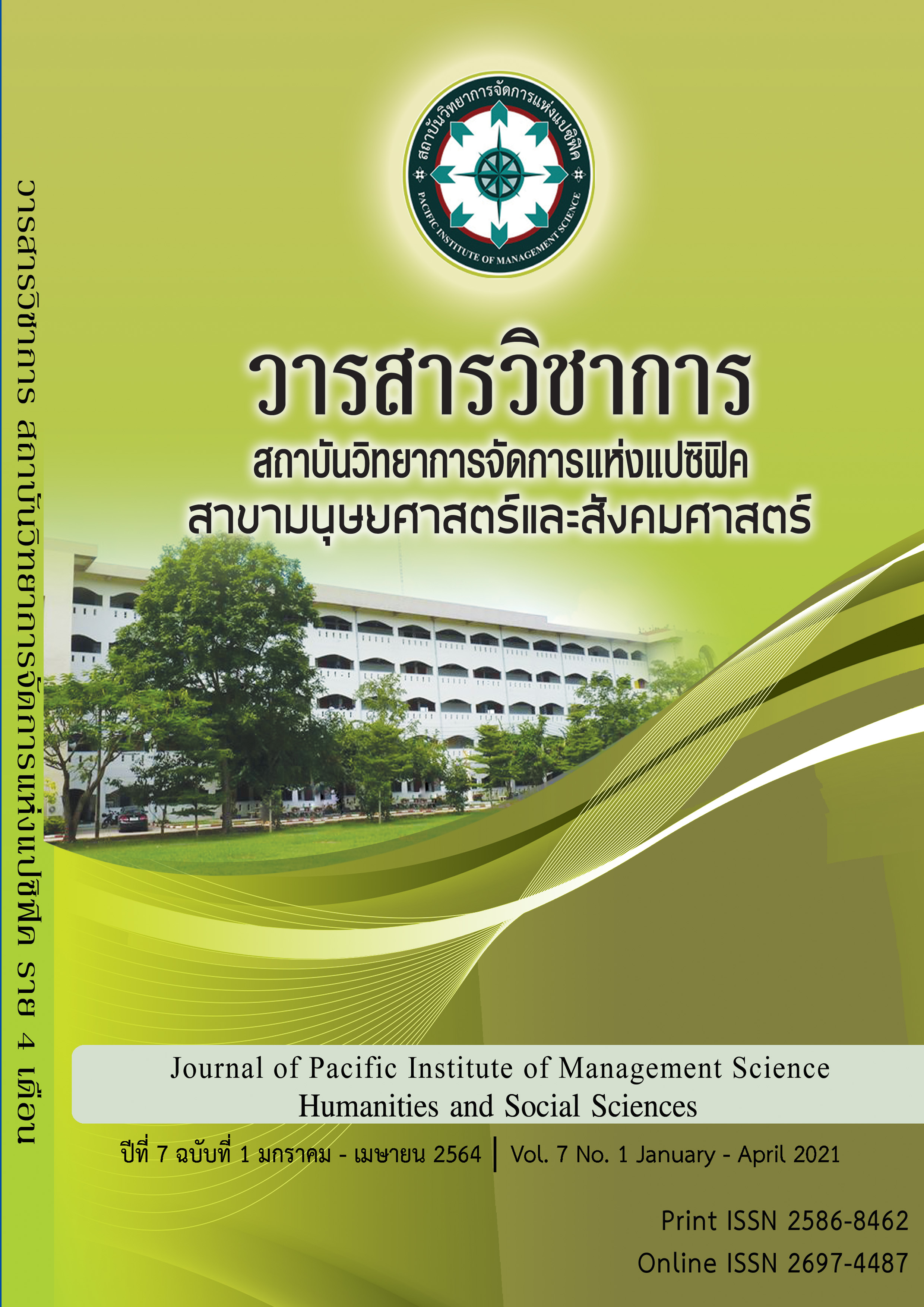The Impact of COVID-19 Pandemic toward Asian Pacific Stock Markets during Year 2020: An Empirical Study of Logarithmic Returns and Duration Dependence Test Model
คำสำคัญ:
OVID-19 Pandemic, Asian Pacific Stock Markets, Logarithmic Returns, Duration Dependence Test Model.บทคัดย่อ
COVID-19 pandemic had significant economic implications, not only the cost of managing people's health but also seriously affecting the global economy. The global stock markets plunged during the first three months of this pandemic. This research attempted to discuss upon movement of major Asian Pacific markets during the COVID-19 outbreak during January-December 2020. This empirical research identified and compared stock speculation/ bubble of seven major Asian Pacific stock markets by using econometric models.
The leading stock exchanges in the Asian Pacific region were chosen, which ranked by Statista. These countries are Japan, China, India, Australia, Korea, Singapore, and Thailand. Daily closing index prices were gathered from January to December 2020. This research utilized the logarithmic return model and the duration dependence test method to calculate the results. Microsoft Excel and Statistica programs were used for model creation and generating results.
The results show that Korean Stock Market was the best performer during the year 2020 followed by Japan, India, and China. They yielded positive logarithmic returns by the use of daily index prices. Whereas Australia, Thailand, and Singapore stock markets yielded negative logarithmic returns. Duration dependence test results show no evidence of rational speculative activities/bubbles in the stock markets of Japan, Korea, India, Australia, and Singapore. On the other hand, there was evidence of rational speculative bubbles in China and Thailand stock markets.
เอกสารอ้างอิง
Binswanger M. (1999). Stock Markets. Speculative Bubbles and Economic Growth. UK: Edward Elgar Publishing.
Cuthbertson K. (1996). Quantitative Financial Economics: Stocks. Bonds. and Foreign Exchange. London: John Wiley and Sons.
Fama, E. F. (1970). Efficient Capital Markets: A Review of Theory and Empirical Work. Journal of Finance. vol. 25. pp. 383-417.
Harman YS. and Zuehlke. TW. (2001). Testing for Rational Bubbles with a Generalized Weibull Hazard. Working Paper. Department of Finance. Oxford: Miami University.
Islam S. and Watanapalachaikul S. (2004). Empirical Finance. Heidelberg: Springer.
Jensen, M. (1978). Some Anomalous Evidence Regarding Market Efficiency, Journal of Financial Economics, vol. 12, pp. 33-56.
McQueen G. and Thorley S. (1994). Bubbles. Stock Returns. and Duration Dependence. Journal of Financial and Quantitative Analysis. vol. 29. pp. 196-197.
Miskolczi Panna. (2017). Note on Simple and Logarithmic Return. Debrecen: Center Print Publishing House.
Statista. (2020). Leading stock exchanges in the Asian Pacific region in 2019. [Online]. Retrieved September 20, 2020, from https://www.statista.com/statistics/710680
Statman M. (1988). Investor Psychology and Market Inefficiencies. Equity Market and Valuation Methods. California: The Institute of Chartered Financial Analysts.
West KD. (1987). A Specification Test for Speculative Bubbles. Quarterly Journal of Economics. vol. 102. pp. 553-580.
ดาวน์โหลด
เผยแพร่แล้ว
ฉบับ
ประเภทบทความ
สัญญาอนุญาต
บทความที่ได้รับการตีพิมพ์เป็นลิขสิทธิ์ของ สถาบันวิทยาการจัดการแห่งแปซิฟิค
ข้อความที่ปรากฏในบทความแต่ละเรื่องในวารสารวิชาการเล่มนี้เป็นความคิดเห็นส่วนตัวของผู้เขียนแต่ละท่านไม่เกี่ยวข้องกับสถาบันวิทยาการจัดการแห่งแปซิฟิค และคณาจารย์ท่านอื่นๆในสถาบันฯ แต่อย่างใด ความรับผิดชอบองค์ประกอบทั้งหมดของบทความแต่ละเรื่องเป็นของผู้เขียนแต่ละท่าน หากมีความผิดพลาดใดๆ ผู้เขียนแต่ละท่านจะรับผิดชอบบทความของตนเองแต่ผู้เดียว







